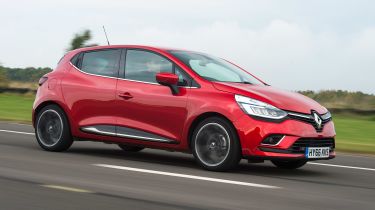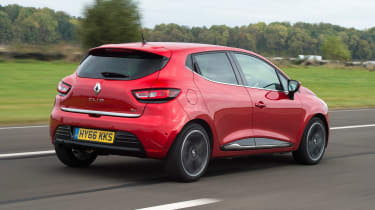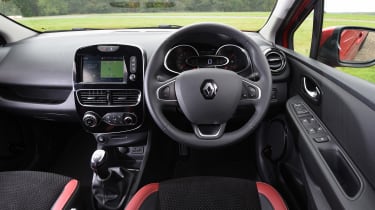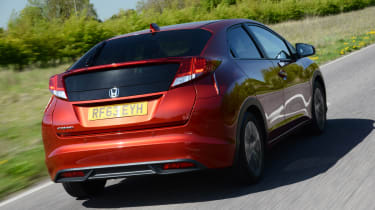New Renault Clio 2016 review
We get to grips with the facelifted Renault Clio supermini on UK roads. How does it shape up?

The Renault Clio remains a capable and perfectly recommendable supermini, with this light facelift tweaking the car in several key areas to ensure it keeps pace with the class best. Volkswagen’s Polo is a more grown-up, refined choice, while the outgoing Ford Fiesta is more fun to drive. Still, the Renault is cheap to run, well equipped and offers bags of style, making it a firm favourite for young buyers who relish this area of the market.
Unusually, our first UK drive of the facelifted Renault Clio came courtesy of the hot Clio RS Trophy model, rather than the volume-selling small-capacity petrol. Now, though, we’ve got behind the wheel of the tiny turbo, to see if incremental improvements can keep the humble hatch at the top of its game.
Visually, the standard Renault Clio gets many of the same upgrades as the RS, using identical headlamps with sharp LED daytime running lights. It misses out on that car’s sharp three-piece foglights and aggressive bodykit, but it’s a sleek, well considered facelift. There’s plenty of French flair, too, with the big diamond badge giving it a recognisable face, and new darkened light clusters at the rear. It still gets the coupe-style rear-doors, with the handles hidden in the C-pillars.
Used - available now
Inside, there is a series of tweaks to breathe life into Renault’s best-selling model. These include higher-quality materials for the doors and dash, as well as new matt-black trim on the air vents. It’s a welcome refresh, but a Volkswagen Polo still feels more upmarket. Entry-level Clios do without some of the soft-touch dash trim, too, while our car’s leather steering wheel doesn’t feature on basic models, either.
Renault has listened to customers, though, many of whom are youthful first- time buyers. Base-spec Clios now come with a neat smartphone cradle as standard, while plusher cars like our Dynamique S use the familiar R-link infotainment screen.
There’s no Apple CarPlay or Android Auto, which instantly makes the Renault system feel dated against more modern rivals. Standard kit is good, with all cars getting cruise control, keycard entry with push- button start, and driver’s seat adjustment. There’s funky red trim on basic versions, too, while front electric windows complete a generous equipment list. Despite its premium, the Dynamique S is expected to be a big seller, thanks to the fact it gets sat-nav, 17-inch wheels and climate control.
Yet while improvements have been made inside and out, under the skin, things stay largely the same. There are no changes to the suspension or chassis, but the Clio still feels tight, responding well to quick changes of direction. It just doesn’t always appear as if its wheels communicate that well with the body, which can upset the car through tighter bends. The ride is a little fidgety over rougher roads, too.
The dinky 898cc three-cylinder engine is a decent match, though. It’s peppy around town, and can keep up with faster- moving traffic on the motorway. It’s even pretty refined, despite the gearbox making do with five instead of the more desirable six speeds.
You’ll need to stay on top of those gears to make swifter progress on A or B-roads as maximum torque isn’t available until 2,500rpm. The gearbox feels a bit loose, too, making hurried changes a little tricky.
Still, fuel economy is pretty good. Renault claims 61.4mpg, while emitting 104g/km of CO2. A VW Polo BlueMotion (with more power) promises 68.9mpg, and is exempt from road tax thanks to 94g/km emissions. Renault does offer an ‘Eco’ version, which almost matches the VW’s numbers – but is much slower from 0-62mph. We’d stick with the standard car and accept the costs.
Practicality is still a Clio strong point. The 300-litre boot beats a number of key rivals, while the five-door body means access to the rear is easy. The seats fold, but there’s a nasty step between the boot floor and back rest, making loading a little tricky.















